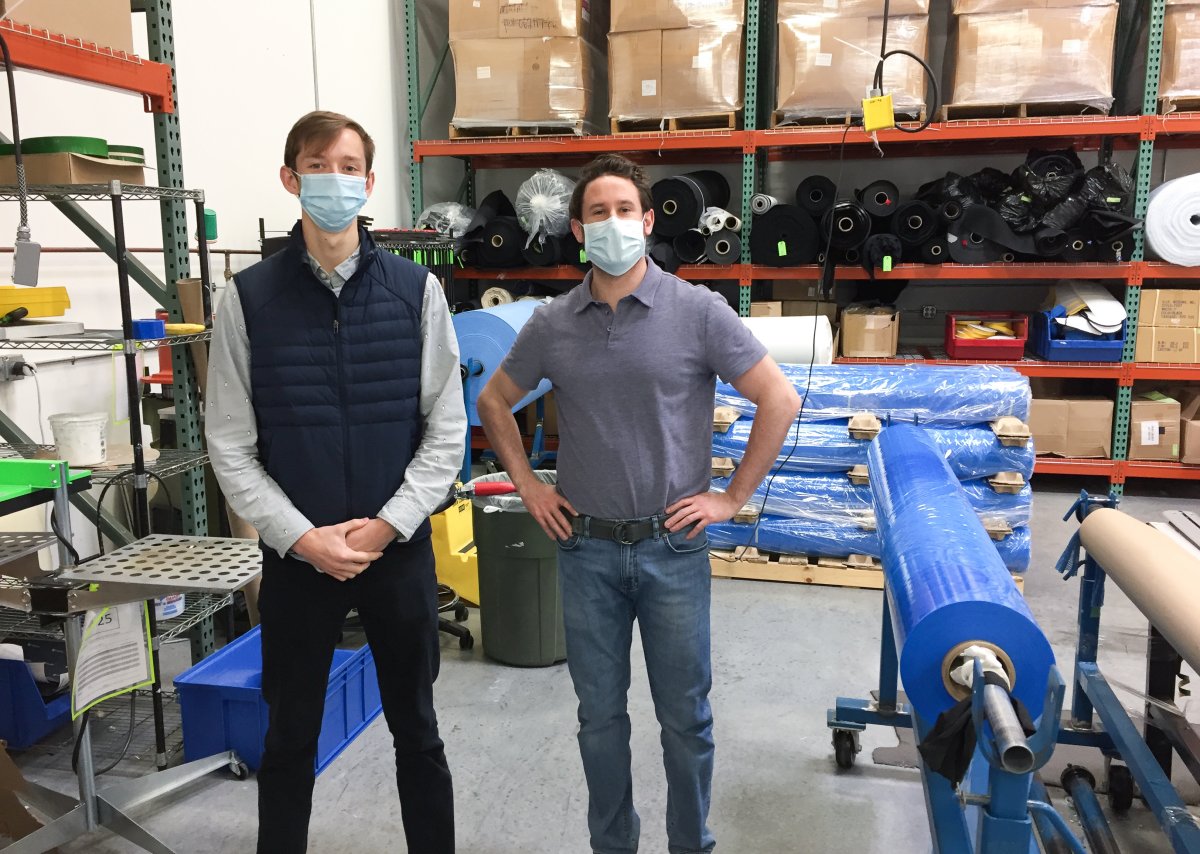CSE students design gowns for healthcare workers

Students partner with M Health Fairview to address PPE shortage
May 11, 2020
Just a few weeks ago, M Health Fairview contacted College of Science and Engineering professor Steven Saliterman asking for help designing disposable gowns for health workers. Saliterman assembled 18 of his biomedical engineering students. Within two weeks, they had created a safe, functional gown design that could be rapidly manufactured for use in Minnesota hospitals.
Now, local companies Red Fox Innovations and Polar Plastics are rapidly producing the gowns—at a rate of 5,000 to 10,000 per day—and shipping them to M Health Fairview clinics.
Students led the entire process from start to finish. They created drawings and prototypes, sourced a Food and Drug Administration-certified material, visited plants, and found local manufacturers. The team’s goal is to produce 350,000 gowns over the next month or two, ultimately providing Personal Protective Equipment (PPE) for 35,000 employees in the M Health Fairview system.

Biomedical engineering senior Sam Newell was in charge of the manufacturing side of the project. He said one of their biggest challenges was finding a company that could produce gowns quickly and at a low price, especially since many local businesses are already hard at work producing masks and other PPE.
“I found this experience rewarding because of the interdisciplinary lessons it taught me,” Newell said. “I was able to gain insight into all aspects of taking a project from day one to the finish line. The exposure I gained in this project was as valuable as any course work I’ve done here at the University.”
The project also gave students valuable experience collaborating with local industry and researchers from other colleges. They worked with M Health doctors and nurses, professors in the University of Minnesota’s College of Design, and 3M to finalize the design.
Plus, it gave them a taste of what it’s like to work in a time crunch.
“I learned as much or more than [I did] in my senior design class,” said James Kerber, another BME senior involved in the project. “However, this was done in [only] three weeks. This was one of the most rewarding projects I have been on. And, it’s a valuable experience that I can talk about in nearly any interview for many years to come.”
Kerber and Newell said they hope more and more organizations nationwide will step up to address PPE shortages in the future. But for now, they’re focusing on making a local impact. The next step for their team is ramping up production to meet their goal of 350,000 gowns in the coming months.
Learn more and read a day-by-day breakdown of the gown design process.
Story by Olivia Hultgren
If you’d like to support students at the University of Minnesota College of Science and Engineering, visit our CSE Giving website.
